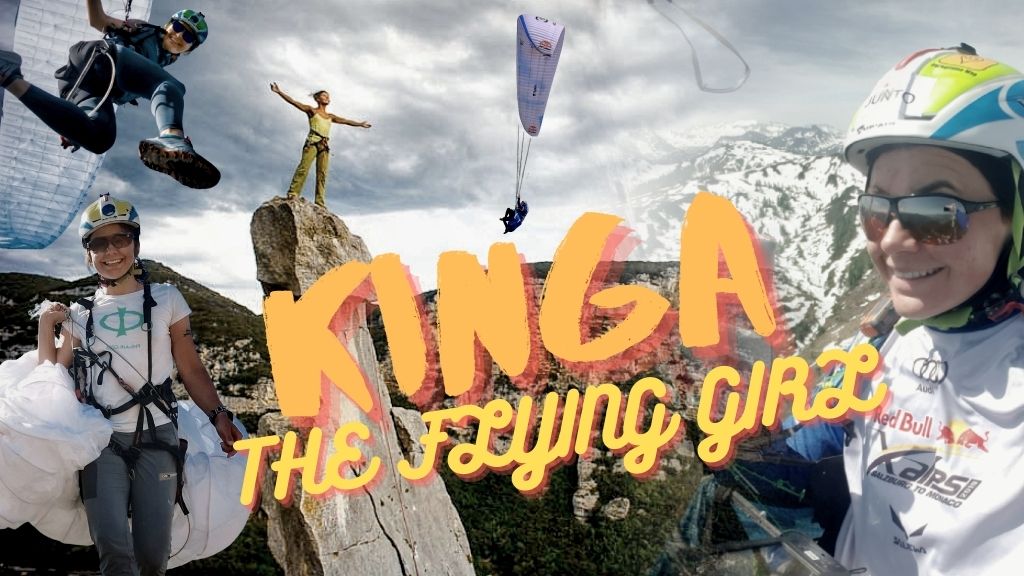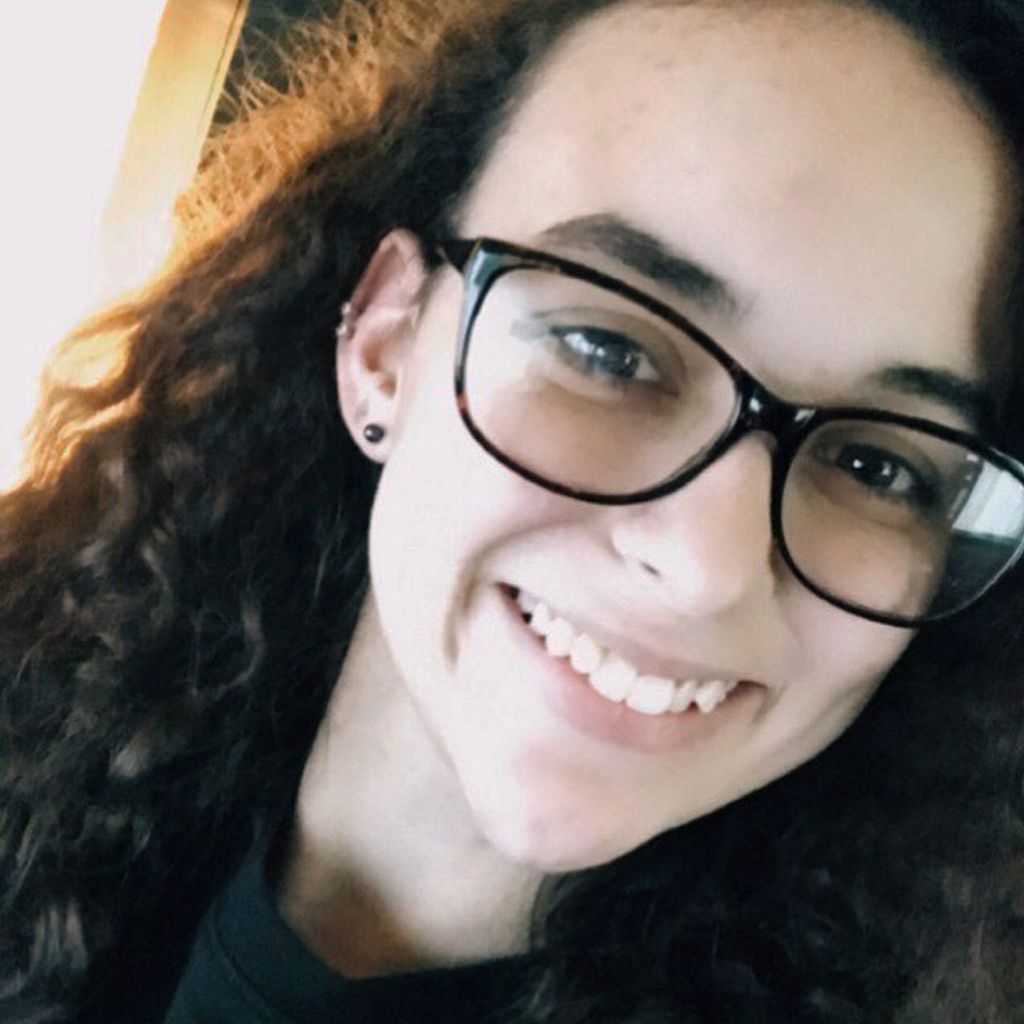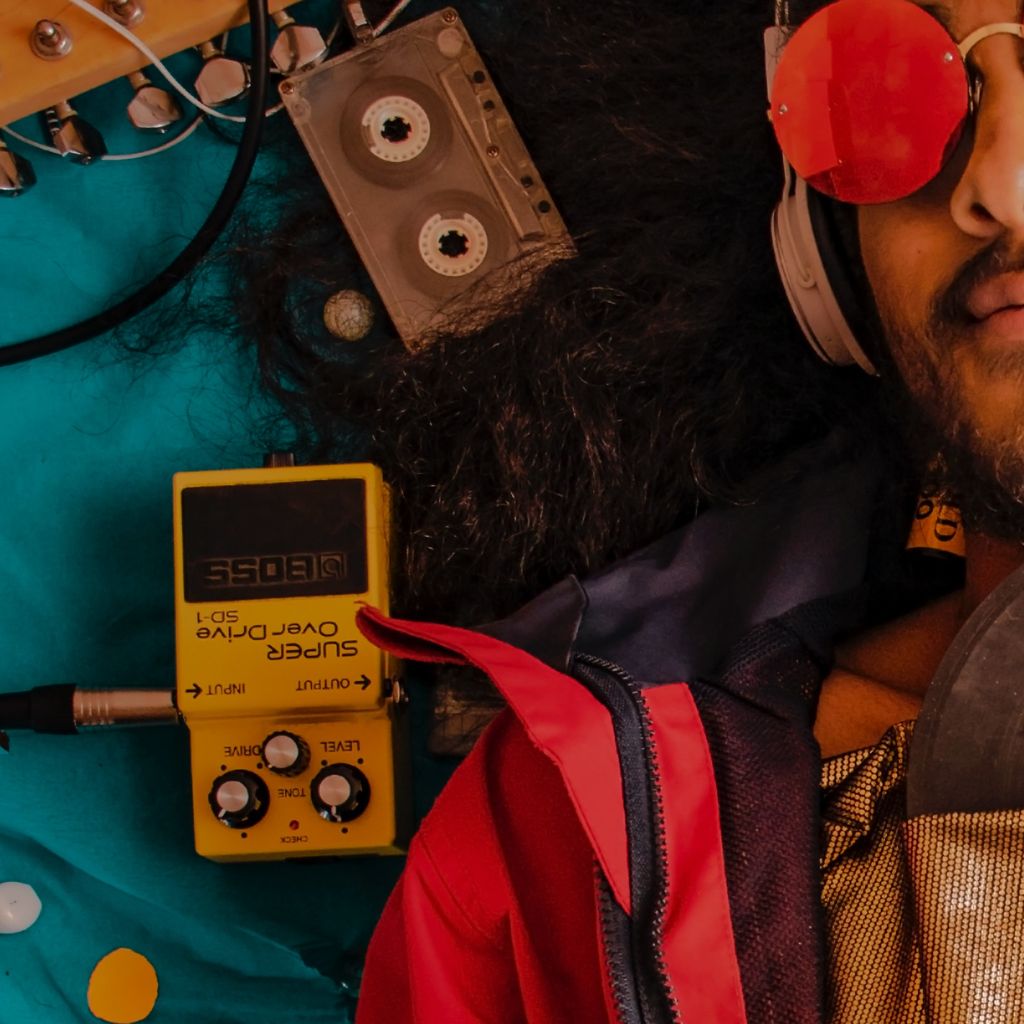
Kinga Masztalerz: The Flying Girl
Kinga Masztalerz is a mountain paragliding pilot specializing in vol-bivouac and the only woman in history to qualify more than once in Red Bull X-Alps. She is also a New Zealand champion and 2x distance record holder. Kinga is involved in other sports too since she is also a rock climber, alpinist, and skier. We talked about her adventures, the dangers she has to face in the sky and how she abandoned a Ph.D. in Physics to fly above snowy peaks.
Where can we find you now and what do you do?
Currently, I’m cruising through New Zealand in my camper van, paragliding, MTB and skiing. In general, when there are no travel restrictions, I spend Southern Summer in New Zealand and Northern Summer in the European Alps, then Indian Himalayas in October and back to New Zealand for Southern spring. Paragliding is my great passion and following the flyable weather has been ruling my life for years.

How easy is it for someone to get involved in paragliding? What are the preparation stages before one is finally in the air?
Paragliding is the most accessible aviation sport. The idea is extremely simple, you have two brake lines in your hands, you pull left, you turn left, you pull right, you turn right. Therefore anyone who has some spacial awareness and common sense can fly. However, don’t let it deceive you, to fly safely you need airtime, dedicated training, meteorological knowledge and deep understanding of the air around you and of your own capabilities, I still learn, every time I go flying. To begin, you need some basic training, length and cost of which depends on the country, it pays off to find a renowned, certified instructor in your area and learn the basics in a safe and friendly environment. Once you’re certified (equivalent to a driving license) you can slowly gather airtime and expand your skills. Paragliding has a great capacity, there is space for relaxed soaring in the laminar wind, demanding all-day long-distance flights over rugged terrain, speed competitions, acro tricks and of course my beloved hike & fly and multi-day mountain expeditions. If the air is your element, paragliding might be the way!
Tell us a few words about your training and how you exercise when you are not flying over snowy peaks.
I have a mix of strength and endurance training for my hike & fly adventures. Always happy to train outside, MTB, hiking, running, skiing or climbing mountains, lately, I got into white water kayaking and I love it, a great replacement for paragliding when the weather isn’t flyable. I also work on my strength at the gym. Additionally, I do daily yoga/mobility training and meditation. Flying a paraglider isn’t very physical, it’s more a mind game, requiring focus, mindfulness and accurate reactions in surprising situations.
Paragliding is definitely a high-risk sport but not because of gear failure, certified gear is very safe and 99,9% of incidents are caused by human error.
Besides paragliding you are involved in other sports, you are also a rock climber, alpinist, and skier. What is it that keeps you going and involved in so many challenging sports?
Before I discovered paragliding, my life was turning around rock climbing. However when I took off with a paraglider for the first time, I fell in love completely and since then flying has been on the top of my list, I’ve been chasing it hard, sacrificing many other aspects of my life. So now I only do other things when the weather isn’t flyable and I mostly treat them as paragliding training. Sometimes it’s possible to connect them with flying, like climbing a mountain and flying off or flying with ski on (speed flying). However, to be honest, paragliding always wins!
I find mountain sports fascinating as they really challenge you, not only physically but also mentally, truly getting to the core of who you are. Especially flying in the mountains is so special for me as it takes who I am and amplifies it all. All my strength and commitment translate into joy, all my fears and limitations become naked and shamelessly obvious. Good decisions are rewarded, mistakes are immediately punished. There is only you and your decisions, headspace, courage to go for the unknown. In everyday life on the ground, we can always hide our fears, distract ourselves from any inner issues, find excuses, blame others. In the air I truly am.

You started paragliding after an accident you had while rock climbing. How dangerous is paragliding compared to other sports? What can go wrong and how easy is it for someone to deal with a potential problem in the air?
Paragliding is definitely a high-risk sport but not because of gear failure, certified gear is very safe and 99,9% of incidents are caused by human error. Every pilot can decide how much they want to push it. Progress vs safety and risk management are integral parts of flying.
At the very beginning, you’re under professional guidance so accidents happen very rarely. The tricky part comes next, when you are already certified, have a few hours behind your belt and feel like you ‘have it’. We call it ‘intermediate syndrome’, you think you know what you’re doing but in reality, you have no clue. As I mentioned, the idea behind the paragliding is very simple (pull left, turn left) but it takes time and work to learn about the dynamics of the air mass (you can’t see it!), how to properly deal with turbulent air and deflations of the wing (at the end it’s just a piece of cloth on some strings!), how to take off and land safely in various conditions, etc. I had many close calls during my intermediate phase and I got truly lucky a few times. Now I’m at a different stage, I sometimes push the odds but it’s a conscious decision, I understand the risk involved. It doesn’t mean that I don’t make mistakes but at this level of flying expertise compliance is the most common cause of the incidents, when we’re so relaxed, we don’t pay attention. Flying always keeps you in check!
I have a long story of bad risk judgment mishaps, I came to paragliding from other high-risk sports, for years I used to live like I was immortal, throwing myself headfirst into all the adventures without thinking of consequences. Rock climbing, mountaineering, biking, skiing, snowboarding, or simple everyday recklessness... Let's just say that I have visible scars from 5 different accidents only on my face. I long lost count on the rest of my body.
I still had this mindset when I started paragliding and together with my overwhelming passion (or rather obsession) for flying, it put me into the hell of trouble during my first spring (the air is the most ‘alive’ in spring). Within a couple of weeks of April, I had 4 outrageous incidents and it was pure luck that I came out of them only with bruises. Finally, I ended up parachuting on a soaked wing in a hauling storm and hitting the ground hard, and it made me realize that I had to rethink my approach.

Everyone's journey is different but paragliding progress always means stepping out of your comfort zone which is tightly woven with taking a risk. Progress vs. risk. It took me years to find the right balance between these two. It's been based on meditation training, mindfulness, practicing staying connected, and constantly checking with myself, until it became my second nature, asking and honestly answering one question: Does it feel right?
If it does, I can safely pull off some wild stuff in remote terrain, if it doesn't, I won't go for it, even if 'objectively' there is no problem. I've been doing it so often, that it now takes a fraction of a second, not only when flying but any time I recognize something might be off. It can be as simple as that I'm dehydrated or need some sugar, or it might go deeper. It guided me safely through my first mountain XC seasons, vol-bivouacs, solo flying all over the world including New Zealand and Himalayas, and through the madness of RedBull X-Alps.
When compared to my accident record from beforehand, it's simply incredible! It doesn't mean I don't make mistakes, and accidents might happen even if we do everything right but staying truly connected lowers the risk dramatically. There are different types of paragliders, from school wings, forgiving all the beginners' mistakes all the way to extremely dynamic acro gliders or fast and twitchy racing machines. Many accidents have happened simply because pilots rushed their progress to high-end wings while their skill level and reaction time weren’t ready for it.
Generally, in case of problems in the air, the higher we are, the more time we have to solve the problem, meaning: high is safe. When you’re scratching a rock face with your wingtip trying to get this little bit of a lift and something goes wrong, you have no time to react. I always feel the most relaxed in the cloud base!
Vol-bivouac literally means flying and camping, I pack my paragliding and camping gear, some food and water into my backpack, hike to the top of the mountain, fly from it as far as I can, land in the mountains, camp and the next day take off and fly further.
Solo Vol-Bivouac is one of your favorites, can you share with our readers a few things about this particular way of flying and what excites you about it?
Vol-bivouac literally means flying and camping, I pack my paragliding and camping gear, some food and water into my backpack, hike to the top of the mountain, fly from it as far as I can, land in the mountains, camp and the next day take off and fly further. It's a pure and self-sufficient way of moving through the mountains, often being able to cover dozens of kilometers in the air over some rough terrain that wouldn’t be accessible otherwise. Vol-biv is true freedom, I love doing it solo when I can only count on myself and truly connect to the elements but I also enjoy sharing it with friends and in particular to teach less experienced pilots what all this mountain adventure is about.

Indiefferential is mainly a music magazine (for now), so we have to ask you, what kind of music do you like? You told us you used to play the violin in the past. Do you still play once in a while?
Yes, 5 years of national music school, I even was our school orchestra’s concertmaster when I was 13! Since then, I’ve tried various instruments, piano, guitar, harmonica, banjo, and lately rav drum. However, I’ve never got good enough at any of them to dare to play in public!
My music taste is constantly evolving, life is too short to only listen to one genre of music! The only thing that is constant are some favorite jazz standards, like Ella Fitzgerald, Bill Evans Trio, or free jazz from Coltraine to Monk. I do quite a bit of programming and I mostly listen to Bach then. However, depending on the mood and moment in my life I might listen to Chopin’s nocturnes, French chanson, modern pop, or a mixed playlist with 150bpm because I’m currently training on the treadmill!
I also had an episode of upgrading my glider a bit too early, listening to other pilots’ advice instead of my own gut. It made me scared every time I was flying.
You have participated twice in Redbull's X-Alps. Tell us about that experience.
Red Bull X-Alps is and ultimate hike&fly race, 32 invited elite athletes race 1100 km across the European Alps for 12 days, and we can only move flying a paraglider or hiking (and then carrying paragliders on our back). Hike & fly Olympics and sufferfest, every other year it gathers 32 best athletes in our sport and only 6 women participated before me, none of them ever finished it.
Hike and fly racing across the Alps with 32 selected, very best athletes in the world, what an adventure it was! It took me to places both in the mountains and in my soul, the highest heights and the darkest lows, it taught me so much about flying, mountains, headspace, friendship, push… It gave me a key to who I can be, opened my eyes to possibilities. It made me a better pilot and a stronger human. I’m honored to be the first woman to qualify twice and I couldn’t wait to do it again in June 2021. Unfortunately, training for the race I injured my foot (hiking, not even a flying accident!) and only a few weeks before the race it was diagnosed as a fracture requiring surgery. Hence I missed the 2022 edition but I’ll be back in 2023!

How easy was it to leave your job in the city and pursue the sport full-time?
It was wild as I had a really cool job as a strategist in a marketing agency and quite a fancy lifestyle and I just threw it all away and moved to the Italian Alps without even knowing the language. However, back then it felt very simple, flying was at the very top of my list of priorities and everything else had to adjust. Passion for flying made me completely fearless, I hitch-hiked all around Europe with my paragliding backpack, slept in some parks, on takeoffs and other pilots’ couches, kept moving, following the flying conditions, never looked back, through China and Australia it finally took me to New Zealand which I now call my home. Once I stopped worrying about money, my life has become very rich.
What was the scariest/exciting thing that happened to you while you were flying?
The scariest was probably mentioned first spring and my ‘intermediate syndrome’ even if I was too unaware to be truly scared then, now when I think about it I’m happy to be alive.
I also had an episode of upgrading my glider a bit too early, listening to other pilots’ advice instead of my own gut. It made me scared every time I was flying and I finally downgraded to an easier glider, flew it for a few months and when I felt truly ready, I came back to the more demanding wing. It sounds simple but I had to put my ego aside and be very honest with myself to do it.
The most exciting women would be difficult to identify. The first time flying along the Miage Glacier in Mont Blanc Massif was magical, it opened my eyes to where this piece of cloth could take me. Landing in a little village in China, when local people who didn’t have much themselves, shared tea and food with me. Landing high in the Indian Himalayas for a night bivouac and spending an evening with local shepherds smoking and drinking chai. Thermalling with large birds of prey, particularly vultures, is incredible in the air.

After a turbulent and scary day and a very uncomfortable night in the Southern Alps in New Zealand, the next day flying the most epic line I could have imagined, completely alone over some wild terrain and doubling (!) my national record.
Paragliding has taken me to so many magical places and moments, it’s really hard to point out the best!
How much has the pandemic in general affected you in terms of being able to fly in the midst of the lockdown?
I fly a lot in New Zealand but lost two seasons in Europe and couldn’t travel to the Himalayas. New Zealand is a little paradise and has been practically Covid-free but it came at the price of closing the borders and extremely limited traveling options. I don’t want to complain because I’m very privileged to live my lifestyle but I really hope that with global awareness and vaccines available, we will be free to travel and enjoy life the way we want very soon.
What do you think the future of sports will look like post-pandemic, lockdowns and restrictions?
Paragliding and other sports I’m into, by their nature involve social-distance so they shouldn’t change much. If we talk about some stadium events and any other gatherings, I believe we need to act responsibly to keep ourselves and others safe. It’s a broad problem, we haven’t been treating our planet well so new viruses, natural disasters and mass migrations might become more and more common. It’s not only about Covid and if we can go to a concert soon, but we all also need to assess both our personal consumption needs, and put pressure on our governments to introduce stricter regulations and to move toward renewable energy.
Previously you were chasing a Ph.D. in Physics and now you fly, what do you consider the most important part of your career so far?
Not sure about my career but I can tell you what is the most important part of my journey so far. I was born in the north of Poland, growing up I was surrounded by people with a very traditional approach, like a girl should get her education but her main goal in life would be finding a good husband and having a big, comfortable house with a well-trimmed loan and a roast every Sunday. Only my father was different but he died when I was very young so I grew up with a particular set of do-s and don’t-s. I’ve traveled a long way since then, broke all the rules and disappointed many expectations to become who I am today. And I like to think that I’m just getting started.
You are the only woman and one of the few pilots in the world to perform long solo vol-bivouacs and the only woman in history to qualify twice for the Red Bull X-Alps. What advice would you give to a woman considering taking up a sport in which mostly men participate?
If something turns you on, brings you joy and makes your eyes shine, just go for it. No matter what others think, or how many women around do the same thing. Connect to people with the same passion, avoid negativity, you really don’t need it.

I personally have been so focused on flying itself, that I didn’t even notice it much at the time but yes, every female pilot I know (including myself) has some experience with a random dude on a take-off mansplaining her how to do stuff or telling that it’s I too strong or too windy (when it is not) and maybe she shouldn’t fly. Now I laugh at it but when you’re a beginner it might be intimidating so always try to surround yourself with people who inspire you, not the ones who drag you down.
The majority of the pg community is absolutely fantastic, keen to share knowledge and support others. I know it’s the same in climbing, ski-alpinism, motocross, MTB, surfing… So if you feel unwelcome in a sport you love, it doesn’t mean that the sport isn’t for you, it only means that these particular people aren’t your people.
Tell us a bit about WANAKA HIKE & FLY.
Wanaka Hike & Fly is a fun hike & fly race organized in the heart of New Zealand Southern Alps. I’ve designed it in a flexible way so if an ambitious athlete wants to win it, they’ll have to push really hard but there are also challenges for less experienced pilots or just a fun weekend out for those who simply want to socialize with friends in the wild mountains or total beginners who want to see what’s all about and learn new stuff. Last year was our first edition and it was overbooked within hours.
What is your next move? Are you preparing for something new soon?
Yes, I’m currently working on three projects, very excited about all of them but I like to talk about dreams realized, not dreams in progress and these are a bit ambitious so first I’ll put the work in and make them happen and then let’s catch up again to chat about the results!
Facebook
Instagram
Website
YouTube









